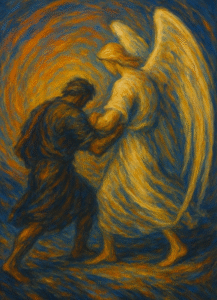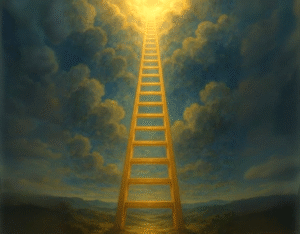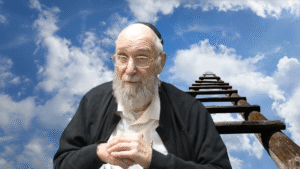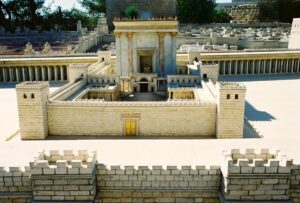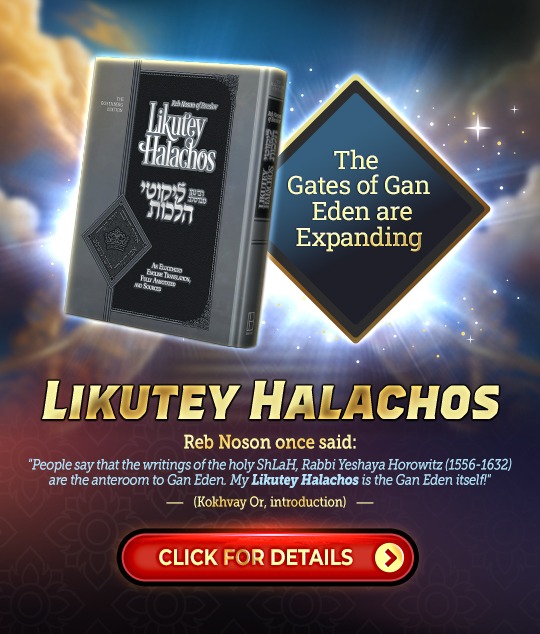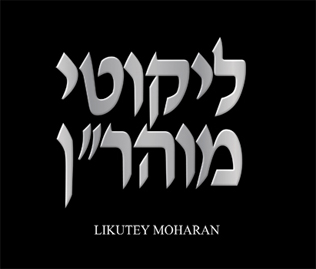- Israel ⬦ Jewish Holidays ⬦ Joy ⬦ Read ⬦ Shabbat ⬦ Weekly Torah Portion
The Secret of the Census
Bridging the Infinite and the Finite
As we approach Parshat Bamidbar and Shavuot, Rebbe Nachman’s teaching in Likutey Moharan 24 and Reb Noson’s discourse in Nefilat Apayim #4 offer essential context for understanding the Parshah’s deeper message. Hashem created the world as a place of concealment (olam from ha’alamah), where the ultimate purpose is to make His presence known—from within the concealment—through emunah. Our task is to bring the Infinite Light into a finite world, a paradox that seems impossible yet lies at the heart of creation.
The Role of Keter: Reaching and Not Reaching
To mediate between the finite and the Infinite, Hashem established a boundary: the Keter, or crown. It serves as both a barrier and a gateway. The Keter pushes back the soul that seeks closeness to Hashem—not as rejection, but as preparation. This dynamic of matei v’lo matei—touching and not touching, reaching and being bounced back—is what allows the Infinite to enter the finite in a measured, sustainable way.
This pushback is often bewildering. A person who tries to come close to Hashem and is met with difficulty may wrongly interpret this as failure. But Rebbe Nachman explains that it is precisely this experience of setback that prepares one to receive the Infinite Light. How we respond to this pushback—whether with despair or with emunah—determines whether the light will shine through.
The Power of Simcha
For this process to succeed, Rebbe Nachman emphasizes one crucial condition: serving Hashem with joy. Only when a person performs mitzvot with simcha can he withstand the setback of the Keter without falling into despair. Joy makes the heart resilient. It allows the soul to interpret spiritual resistance as part of the journey rather than its end. The light of the Ein Sof can only enter the world through a soul that continues to serve Hashem joyfully, even when blocked or bewildered.
This is the paradox of divine closeness: the moment that feels like rejection may in fact be the threshold of deepest connection—if we receive it with joy.
The Spiritual Danger in Counting
Continuing the theme of how the Infinite Light is brought into finite creation through the Keter, Reb Noson turns to the concept of numbers—and why they are spiritually significant and potentially dangerous. He notes something striking in mathematics: all numbers are built from the digits 1 through 9, and once we reach 10, we begin again using 1 and 0. In essence, zero always appears after the count reaches its peak. This mirrors the spiritual process: a soul reaches upward, hits the Keter, and is pushed back to the beginning—not as a defeat, but as a cycle of deeper advancement. Ten leads to eleven, twenty to twenty-one, and so on—but always with a reset. This reflects how the Keter operates: forcing the soul to begin again, with greater strength and boldness.
This cycle also teaches us that true elevation includes returning to zero, reconnecting with Hashem’s Unity that precedes all plurality. Just as zero precedes one, Hashem’s presence underlies all multiplicity.
Counting Jews and the Power of Connection
This spiritual truth also explains why the Torah forbids directly counting Jews. Numbers represent plurality and finitude—the domain of this world. The Jew, through mitzvot, serves as a connector (tzavta) between creation and the Infinite Light. By counting Jews directly, we risk defining them solely within the bounds of this finite world, severing them from their spiritual role. This creates vulnerability—spiritually and even physically—opening the door to plague and disaster.
Instead, the Torah instructs a census through indirect means, using the half-shekel coin (beka legulgoleth). Each coin represents not just a person, but a contribution to the Mishkan—the place of Divine connection. By associating the count with giving and with holiness, the danger is avoided. Jews are counted not as finite individuals, but as part of the greater spiritual mission to draw Hashem’s light into the world.
This explains the counting in Parshat Bamidbar: by elevating the count through the Mishkan and the coins, the census becomes part of the Divine service, not a reduction to worldly plurality.
The Census and the Keter Connection
Reb Noson delves deeper into the spiritual mechanics behind the census of the Jewish people described in Parshat Bamidbar. Why are Jews only counted from the age of 20 and up? The answer lies in the connection between the number 20 and the letter kaf (כ), the first letter of the word Keter—the crown. According to Kabbalah, the initial letter of a Hebrew word contains the essence of the word’s meaning. Since the kaf is bent, it symbolizes submission and humility, which are prerequisites for receiving the light of the Keter.
Though bar mitzvah marks the beginning of mitzvah obligation, age 20 represents a spiritual maturity that allows a person to connect more fully to the Keter. This is why the Torah chooses this age as the threshold for inclusion in the census and eligibility for military service. Soldiers entering the army at age 20 reflect their ability to carry spiritual responsibility.
The Keter experience is when the Torah becomes not only wisdom but personal Divine communication. Every mitzvah, every bit of learning, becomes a channel through which Hashem illuminates our lives.
Cracking the Keter: Beka Legulgoleth
The phrase beka legulgoleth—”a half-shekel per head”—contains layered meanings. Beka not only refers to the coin used for counting, but also alludes to beki’ah, meaning to crack open. Legulgoleth means “per skull,” and in Kabbalah, the skull represents the Keter. Together, the phrase implies a spiritual act of piercing into the crown, accessing Divine light through the “push-back” process activated by the Keter. This is how the census becomes not a threat, but a channel for spiritual elevation—when done through coins given for a holy purpose like the Mishkan.
Hashem’s Love Expressed Through Counting
Rashi brings a powerful insight on the census: “Mitoch chibatan lefanav”—because of Hashem’s love for the Jewish people, He counts them constantly. Rashi notes several key moments when Hashem conducted a census:
- Leaving Egypt (Parshat Bo): 600,000 men, excluding women and children.
- After the sin of the Golden Calf: to determine how many remained.
- When resting the Shechinah upon them: during the construction and dedication of the Mishkan.
Each counting is not bureaucratic—it’s an act of affection, showing how precious each Jew is in Hashem’s eyes. By linking the census to the Mishkan through the half-shekel, it becomes a source of protection and blessing, bypassing the spiritual danger of reducing Jews to numbers. The use of age 20 and symbolic terminology further ties the entire process to the Keter, emphasizing its spiritual significance rather than mere logistics.
The Census and the Shechinah
A powerful question arises: if the census was for the sake of the Shechinah, why wasn’t it done on the first of Nisan, when the Mishkan was first erected? The commentaries answer that a full 30 days are required to confirm that the Divine Presence is dwelling permanently among the Jewish people. Thus, the census on the first of Iyar (30 days later) marks the beginning of a lasting connection between Hashem’s Infinite Light and this world, now sustained through Torah study and mitzvot, even after the destruction of the Beit HaMikdash.
Although counting Jews can be spiritually dangerous, the count in Parshat Bamidbar is done through tzedakah, using the half-shekel coins. Unlike the earlier census—where funds were used for constructing the Mishkan—this census’s donations went toward korbanot and ketoret, offerings in the Temple. These korbanot bring joy and atonement, fostering simchah, which is essential for drawing down Divine light. By channeling the act of counting into giving—into joyful service of Hashem—the danger is reversed, and instead, it becomes a powerful spiritual act.
Shavuot and the Countdown to Keter
Parshat Bamidbar always falls right before Shavuot, and this is no coincidence. The Parshah’s focus on counting for the sake of Divine connection mirrors the Sefirat HaOmer—the 49-day count from Pesach to Shavuot. Unlike counting people, which risks separation from Hashem, counting days is a form of yearning—a spiritual ascent.
On Pesach, each Jew receives an undeserved, overwhelming light—a flash of Divine awareness. But that light quickly recedes. Starting the very next night, we begin a structured, day-by-day climb, represented by the barley offering, symbolic of our animal nature. Each day, we refine and define ourselves and our inner yearning, aspiring to reach the 50th day—Shavuot.
The number 50 corresponds to a higher level of Keter, the “crown” beyond all the Sefirot (five dimensions of Keter – the four dimensions plus the ultimate Keter above them all). Just as the census is linked to Keter, the Sefirat HaOmer is a gradual preparation to receive new Torah, where the Torah becomes not just learning, but a vessel through which Hashem shines Infinite Light directly into our lives. Whether learning Halachah or Kabbalah or any other branch of Torah, every page of Torah can become a Divine message, offering guidance, faith, and the strength to face life’s challenges.
The Inner Struggle of the Omer
While the countdown to Shavuot represents spiritual yearning, Sefirat HaOmer is also a time of judgment and constriction. It’s a somber period in which we mourn the deaths of Rabbi Akiva’s 24,000 students, observing restrictions on marriages, haircuts, and music. According to the Arizal, this intensity lasts until Shavuot itself, because the growing of hair during this time symbolizes dinim—harsh judgments—which must be mitigated before receiving the Torah anew.
And yet, we still count. Some nights we feel uplifted, others dull and disconnected—but by holding on, continuing the mitzvah day after day, we demonstrate unwavering emunah. This simple act—saying a berachah and a number—enables our souls to ascend toward the 50th level, toward Keter, even through personal ups and downs. Consistency despite struggle is what allows us to reach the finish line of Shavuot.
Completing the Count with Joy
Parshat Bamidbar falls right before Shavuot, and this is intentional. The Parshah’s theme of counting through coins used for korbanot reminds us how counting can be spiritually safe—and even empowering—when done through tzedakah that promotes simchah. These korbanot and ketoret represent joy, service, and the restoration of connection to the Infinite Light.
By finishing the Sefirat HaOmer with sincerity and joy, we prepare ourselves to receive the Torah with a deeper awareness. This is the Keter experience—where the Torah becomes not only wisdom but personal Divine communication. Every mitzvah, every bit of learning, becomes a channel through which Hashem illuminates our lives with purpose, worth, and love.
Shabbat Shalom and Chag Sameach!
Meir Elkabas
- 0 comment



